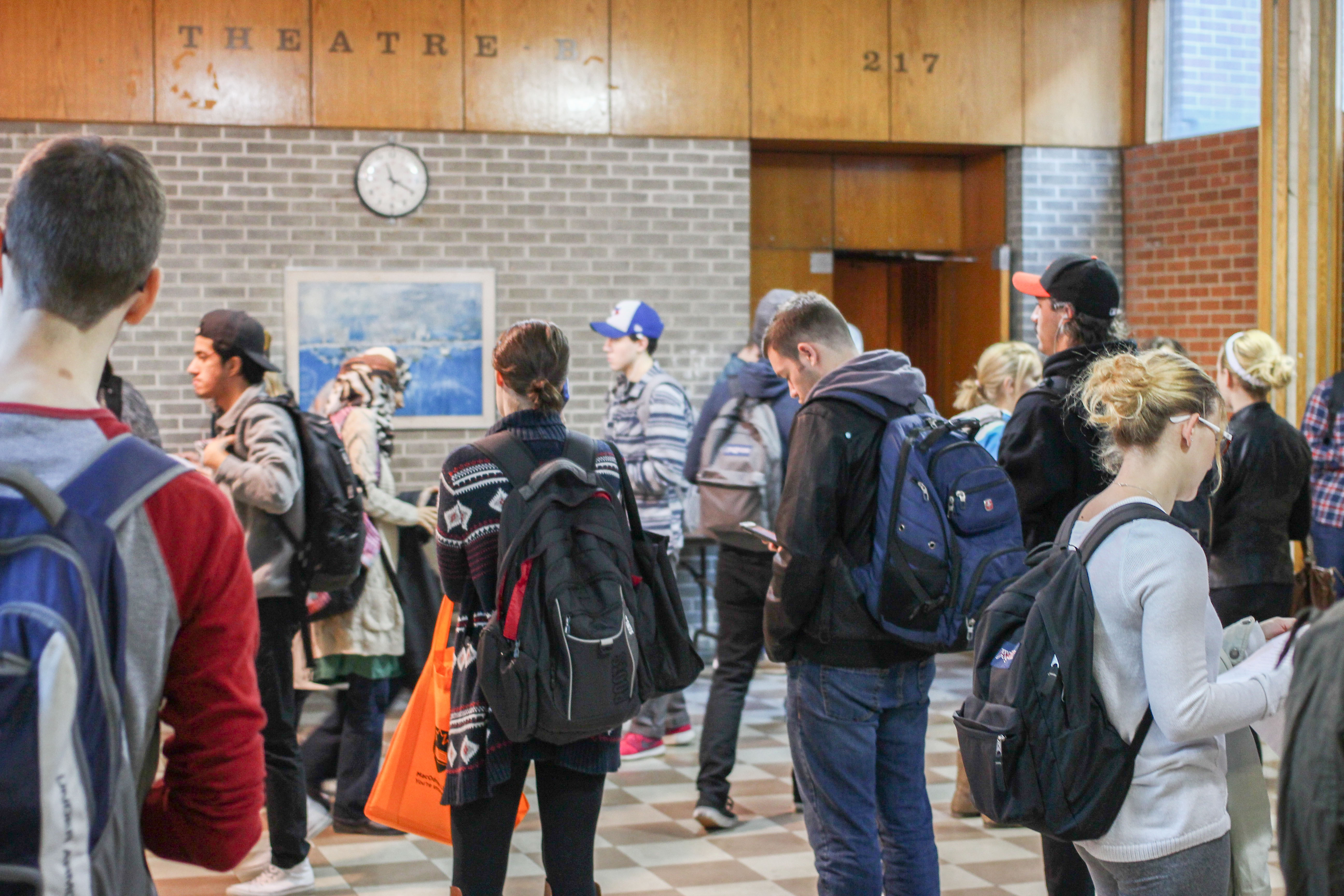With a student body of around 25,000, Carleton students say they often experience overcrowded classrooms.
Brigette Aguilar, a second-year English student, said her most packed classes often take place in large lecture halls and during the first weeks of school.
“For me this year the most packed class I have is communications in the KM Theatre,” Aguilar said. “The first two weeks consisted of the whole theatre full and students having to sit on the aisles.”
Vinay Neermul, a second-year molecular biology student, said he had classes that were over capacity in first year. He cited his chemistry class as an example, and added it was a Video on Demand (VOD) class as well.
“The beginning of the semester, before the midterm, after the midterm, and before the final exam were the only times the classroom would be overcrowded, so it was inconsistent,” Neermul said, and added the class was a prerequisite for many programs.
Neermul said students enrolled in the VOD section of the class would come to the lecture sometimes, often contributing to the overcrowdedness. He said, however, he does not believe it is unfair.
“I can understand that it may seem unfair to people who don’t have Video on Demand and can’t find a seat, but it is still unfortunately a first-come, first-served situation,” Neermul said.
Not only students are affected by the seemingly overcrowded classrooms on campus, but teaching assistants have expressed similar concerns as well.
Meral Tan, a teaching assistant for a second year law course, said her tutorial section was placed in a classroom too small for the amount of people enrolled.
“One section is in a small classroom and there was not enough room in the first discussion we had in the beginning of the term,” Tan said. “It is impossible for that classroom to have even 20 students.”
Jamie Carmichael, the manager of scheduling and examination services at Carleton, said overcrowded classrooms are often caused by “course shopper” students.
“[Course shopper] means that in the first few weeks of classes, you will have students coming to a course that they are not registered in to get a sense of what a particular course is all about,” Carmichael said in an email.
Carmichael said classroom selection for a specific course is based on different criteria.
“The classroom selection process is based on many factors but the main three include: projected enrolment numbers, technology requirements for the course; and in some cases, disability requirements for the professor and or students,” Carmichael said.
She added classroom spaces are determined before registration.
The overcrowded classrooms, however, don’t seem to last forever. Aguilar said more seats become available throughout the term as students drop out of the class.
Carmichael echoed Aguilar’s comments, and said course shopper students “decide whether or not to register in this course before the deadline,” and the overcrowded classes “level off after a couple of weeks of classes.”
She added that although classes are seemingly overcrowded, the university does not have a problem with housing the number of students it has.
“There are enough [classrooms] on campus to hold all academic-related courses and this is reviewed annually,” Carmichael said.
As for students looking to gain a seat in their classroom, Neermul said time management is key.
“I usually got a seat because I had enough time before each class to get to the lecture,” he said. “If anyone ever had no gap before the lecture, it would definitely be difficult for them to get a seat.”






